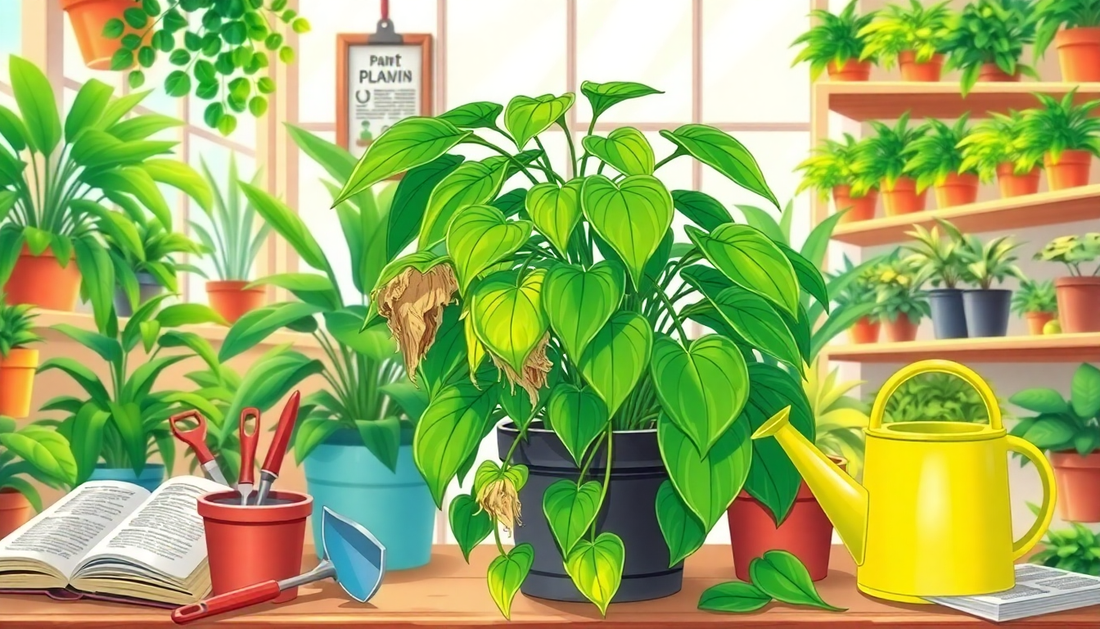
Easy Fixes for Droopy Leaves You'll Learn in Houseplant Classes
If you're a plant parent, you've likely experienced the heartbreak of seeing your beloved houseplants start to droop. Droopy leaves can be a sign of a variety of issues, from underwatering to overwatering, nutrient deficiencies, or even pests. But don't worry - with a little knowledge and some TLC, you can revive even the most wilted plants.
At Idyl, our online plant shop in Bangalore, we've helped countless plant parents nurse their greenery back to health. That's why we're excited to share some of the top tips and tricks you'll learn in our houseplant care workshops. Whether you're a seasoned plant enthusiast or just starting your indoor jungle, these easy fixes for droopy leaves will have your plants perking up in no time.
Identifying the Cause of Droopy Leaves
The first step in reviving a droopy plant is to diagnose the underlying issue. Drooping can be caused by a variety of factors, so it's important to take a close look at your plant and its environment to pinpoint the problem.
Underwatering
One of the most common causes of droopy leaves is underwatering. When a plant doesn't receive enough moisture, its leaves will start to wilt and droop as it struggles to maintain its structure. This is especially common in plants that are prone to drying out, like succulents or cacti.
Overwatering
On the flip side, overwatering can also lead to droopy leaves. When a plant's roots are sitting in too much moisture, they can become waterlogged and unable to effectively transport water and nutrients to the rest of the plant. This can cause the leaves to droop and turn yellow or brown.
Nutrient Deficiencies
Drooping can also be a sign of nutrient deficiencies in the soil. If your plant isn't getting the right balance of essential nutrients like nitrogen, phosphorus, and potassium, it can struggle to maintain its structure and foliage.
Pests and Diseases
Finally, droopy leaves can be a symptom of pests or diseases affecting your plant. Things like spider mites, aphids, or fungal infections can all take a toll on a plant's health and cause its leaves to droop.
Reviving Droopy Leaves
Once you've identified the cause of your plant's drooping, you can take steps to address the issue and nurse your greenery back to health. Here are some of the top fixes you'll learn in our houseplant care workshops:
Proper Watering Techniques
If underwatering is the culprit, the solution is simple: water your plant! But be sure to do so carefully, as overwatering can be just as damaging. The key is to water deeply, but only when the soil is partially dry. Stick your finger in the soil to check the moisture level before watering.
Soil Amendments
If nutrient deficiencies are causing the drooping, you can amend the soil with the appropriate fertilizers or compost to provide your plant with the nourishment it needs. Our experts at Idyl can help you choose the right soil amendments for your specific plant.
Pest and Disease Management
For pests or diseases, you'll need to take more targeted action. This might involve using organic pest control methods, like introducing beneficial insects or applying neem oil, or treating the plant with a fungicide. Our team at Idyl can provide guidance on the best treatment options.
Repotting and Pruning
In some cases, drooping leaves may be a sign that your plant needs a little more space or a trim. Repotting a plant into a larger container or pruning away any damaged or dead foliage can help revive its vigor and encourage new, healthy growth.
Preventing Future Drooping
Of course, the best way to deal with droopy leaves is to prevent them in the first place. In our houseplant care workshops, we'll teach you the keys to keeping your plants healthy and happy, including:
Proper Watering Schedules
Developing a consistent watering routine tailored to your plant's needs is crucial for preventing drooping. We'll show you how to determine the right watering frequency and volume for each of your houseplants.
Nutrient Management
Maintaining the right balance of nutrients in your plant's soil is also essential. We'll cover how to use fertilizers and soil amendments to keep your plants well-fed and thriving.
Pest and Disease Monitoring
Regularly inspecting your plants for signs of pests or diseases can help you catch problems early before they lead to drooping. We'll teach you what to look for and how to implement preventative measures.
Proper Potting and Pruning
Ensuring your plants have the right-sized pots and are properly pruned can also go a long way in preventing drooping. We'll share our expert tips on repotting and trimming to keep your greenery in top shape.
At Idyl, our mission is to help plant parents like you create thriving indoor oases. Whether you're a seasoned green thumb or just starting your plant journey, our houseplant care workshops will equip you with the knowledge and skills to keep your beloved greenery happy and healthy.
So don't let droopy leaves get you down - sign up for one of our classes today and learn how to revive and prevent those wilted woes. Your plants will be perking up in no time!
Key Takeaways
- Droopy leaves can be caused by a variety of issues, from underwatering to pests and diseases
- Proper watering, soil amendments, pest management, and repotting/pruning can all help revive drooping plants
- Developing good watering, nutrient, and pest monitoring habits can prevent future drooping
- Idyl's houseplant care workshops teach all the tips and tricks you need to keep your indoor jungle thriving








No comments